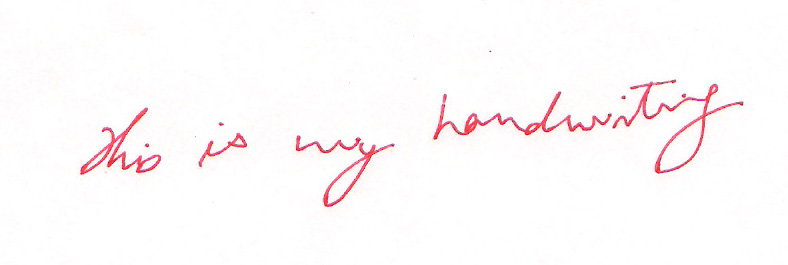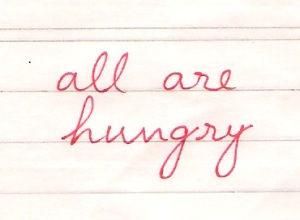By Vishwas Heathhcliff
Tears are pearls. No wonder they sell well — most of the time. Ask TV soap queen Ekta Kapoor; she knows. Evidently, many buy tears (teary stories). Many ignore them. Some drops are genuine, some fake. A lot of people shed tears to feel lighter; a great many misuse them to arm-twist others into meeting selfish ends. Some say tears are soul’s shower, others argue they reflect lack of power. Some let them flow when they are in pain; many withhold because they think it’s a shame.
 Clearly, the world is split over tears. Both views are “valid”, no doubt, and there are plenty of arguments to cushion each of them. Hence, it would be foolish and anserine to take sides and decide which of the two is “more precise” and “logical”. For the moment, we can all agree that the value of this salt-water solution depends on situations. For example, its acceptability in public is utmost only in utter grief or extreme happiness. Any exception to this makes tears attract dyslogistic adjectives such as “ridiculous”, “sissy”, “silly”, “effeminate” and the worst of them all and most casual one is “woman-like”. In short, there is an overriding tendency to disparage emotional behaviour and look down upon tears because they “show the individual’s weakness” and very few want to be associated with the frail and feeble.
Clearly, the world is split over tears. Both views are “valid”, no doubt, and there are plenty of arguments to cushion each of them. Hence, it would be foolish and anserine to take sides and decide which of the two is “more precise” and “logical”. For the moment, we can all agree that the value of this salt-water solution depends on situations. For example, its acceptability in public is utmost only in utter grief or extreme happiness. Any exception to this makes tears attract dyslogistic adjectives such as “ridiculous”, “sissy”, “silly”, “effeminate” and the worst of them all and most casual one is “woman-like”. In short, there is an overriding tendency to disparage emotional behaviour and look down upon tears because they “show the individual’s weakness” and very few want to be associated with the frail and feeble.
Inveterate lamenters don’t care; they give a damn about the dam between the tears and the world outside. Just about any loss — real or imaginative — makes them breach the barrier at any hour of the day, in any situation of life, for anything whatsoever. No holds barred. We all know these patients of ocular diarrhoea and find it strenuous to value them or their grief exhibited by tears. In handwriting analysis, such writers, who lack emotional control, are identified by a certain extremity in the right slant coupled with a bouncy baseline (picture A). There are many exceptions to these indicators and we’ll talk about these emotional freaks in detail some other time. Here, we’ll play snooker.

Ok. I was kidding. No games here. We’ll talk about the other extreme; about those who don’t sell tears. Yes, the same person who sits in the corner and seldom shouts, scarcely screams, rarely reacts, keeps cool, looks detached and appears unperturbed. All of us know a few such people in our lives. They look inviolable and strong. How well do you think you know such people? How do they deal with their emotional pain if they never let the pearls roll down their cheeks? Mind you, they don’t even share their grief with others. Is it possible that they have secret tears that nobody knows about? Is it likely that they never reveal even to their “best” friends that they cry clandestinely even when something “very minor” upsets them? Do they always put up a brave front in the face of losses or hurt while all they want to do is to break down and cry?

Well, the answers to these questions perhaps shape some secret realities of their well-guarded private lives that might be identical to those of many of us. One of the realities is that no matter what others’ views are on tears, many such “strong” people do let their tears flow when they want to and make sure nobody knows about it — maybe just to deflect derision.
On my way back home from office every night by local train, I often choose to stand at the gate because the compartments are not crowded at that hour of the day and it’s a delight braving the gush of wind. One day last week when I was going home, I stood at the gate, looking aimlessly at things that whizzed past in the darkness outside. Suddenly, I was startled by a few drops that scurried down my cheeks. Thankfully, nothing dries faster than tears. I was relieved. I looked around. Nobody had noticed the freedom-seeking drops. It happened to me a few times that week. The reason behind the pain that triggered those tears is personal. And nobody except me knows that. I don’t feel the need to share it. Anyway… let’s not concentrate on me or my pain. I’m not so important. The point I am trying to make here is that some people, especially men, have a tendency to desist from displaying emotions. In interpersonal relationships, they are written off as unemotional people who “don’t understand emotions and have no feelings”. By the way, I see your mind is still trying to guess what happened to me in the train that night. Do you expect me to talk about it? Buzz off! I’m not telling you. Let’s move ahead now.
Talking of emotions: each of us has emotions. But are we all emotional? Perhaps no. Even if we are, do we all show it? Perhaps no. Apparently, many people don’t exhibit emotions because they are not sure whether their emotions will be respected and “understood well” by others. Therefore, emotions are reined and chained and they are freed only in secured environment, in which “no one around”.

Ok, how do we know how emotional a person is? Is crying the only criterion? I agree that those who shed tears more often than not are emotional people. But those who don’t aren’t? Let’s find it out from handwriting. In order to keep anything whatsoever, you need space. If you have too much space to store emotions in your life, it shows in your handwriting. Loops are where you stock emotions. In picture B, notice the loops in l’s, g and y. (The loops in upper and lower zones refer to emotions employed in various areas, such as work, family, romance and religion. It’s another study altogether, which we can’t club with this article.) For the moment, I would like you to understand that the loopier the writing and heavier the writing pressure, the more emotions a person has. Also, the cup-like formations between two connected letters (e.g. see the cup between two l’s and ‘u’ and ‘n’) is also indicative of a person’s capacity to contain emotions.

However, that does not mean that he will be emotional to boot. Whether he will express it or not is known by the slant and pressure of his writing. The heavier the pressure, the greater the emotional intensity and force. In handwriting analysis, a writer with straight slant (with moderate pressure) invariably uses judgment to make decisions. He is ruled by his head, not heart. Some may see him as cold or unemotional. It’s not true. He does have emotions but has no need to express them. The writer does not express emotions until they become extreme or build up over time. Similarly, people with a certain left slant (Picture C) also desist from being emotional. They are socially withdrawn and all emotions are reserved for their personal lives. Unless their signatures indicate that they will be bubbly in public, such writers are detached and withdrawn most of the time. The favourite song of such people happens to be Private Emotions.
------------ Special Newsletter Reader Offer ------------

Visit the discount page now.
There are various slants of writing, which reflect how a person is likely to react in emotional situations. Graphology students are told to pay special attentions to slants that indicate the emotional outlay of the person. If the slant is not determined correctly, it’s likely that the analyst will go wrong. For example, a stroke in the handwriting may tell us that the writer is ill-tempered, but if he has a straight slant and a firm baseline, he won’t blow up as fast as someone with the right slant.
Clearly, the same ill-temper stroke will give different results in different slants of writing. If a girl with a certain right slant in her handwriting gets involved with a guy who writes with a straight or left slant, she will have to wait for long to know whether he likes her not. While talking to him at the emotional level, she will feel as if she is continuously drawing water from a deep well.
By the way, after analysing the handwriting of Ms Better-Than-Google.com, who writes with an extreme right slant, I had warned her against getting involved with a left-slant writer because a relationship with him can never provide her fulfillment. My warning to her had a reaon: I’ve found that most people with extreme right slant get involved with the left-slant writers. It’s because opposites attract.
By the way, what do we do with the tears with which we started? Let’s leave them here. As I said, nothing dries faster than tears. They will vanish soon.

Permalink
I found this article by far the most valid of all.What an insight i got! I could relate to the handwriting traits mentioned and well its true.I can vouch for this article! Thanks Mr.Bart 🙂
Permalink
Hi Vishwas.. I hav reading ur articles since quite a while.. and it had definately made me learn many things abt handwriting.
As ur article say that ppl with straight handwriting do not show emotions but My case is different.
I used to have right slant with balanced spaces between wrds as well as letters bt at time i nvr used to cry in frnt of othrs atleast..
Bt i hv noticed dat from quite a while my handwriting slant is straight with large amt of spaces between words, followed by heavy pressure, bt i always find myslf broking down n always with tears.. Hw is dat possible if i have straight slant in my handwriting. Please do answer as im realy confused on this
Permalink
Tanya, it’s difficult to reply to your query without looking at the handwriting sample.